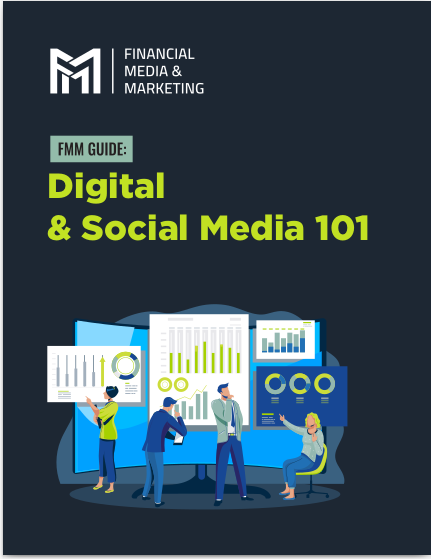Key Takeaways
-
Turning leads into clients requires a blend of relationship-building and smart strategies to streamline the process.
-
By leveraging proven techniques, you can focus on providing value while reducing effort.
Understanding Your Leads
The first step to turning leads into clients is understanding who they are and what they need. Not all leads are created equal—some may be ready to commit, while others are still exploring their options. To address these differences, segment your leads into categories based on their level of interest and engagement.
Start by asking yourself:
-
What motivates this lead to seek financial advice?
-
Are they actively looking for solutions or simply gathering information?
-
What specific challenges are they facing?
By answering these questions, you’ll be able to tailor your approach to meet each lead’s unique needs, increasing the likelihood of conversion. Understanding your leads also helps you prioritize your efforts, ensuring you focus on those most likely to convert while nurturing others over time.
Digging deeper, consider creating detailed lead profiles. These profiles can include demographic details, financial goals, and communication preferences. A robust understanding allows you to predict needs and craft strategies that feel highly personalized, fostering a deeper connection with your potential clients.
Building Trust and Credibility
When it comes to financial advising, trust is everything. Leads are more likely to become clients if they feel confident in your expertise and believe you have their best interests at heart. To build trust:
-
Showcase Your Expertise: Share educational content such as blog posts, videos, or webinars. This positions you as a knowledgeable resource.
-
Be Transparent: Clearly explain your services, fees, and processes. Transparency helps eliminate doubts.
-
Engage Authentically: Respond to questions and concerns promptly. Genuine interaction builds rapport and fosters trust.
Trust isn’t built overnight, but consistent efforts to provide value and communicate openly will pay off in the long run. Additionally, staying up-to-date with industry trends and regulations can further bolster your credibility. When leads see that you’re informed and proactive, they’re more likely to trust your guidance.
Another way to build credibility is through professional certifications and affiliations. Displaying these achievements reinforces your qualifications and commitment to excellence, giving leads an extra layer of confidence in your services.
Personalizing Your Approach
A personalized approach makes leads feel valued and understood. Use the information you’ve gathered about their goals and concerns to craft tailored communications. For example:
-
Send targeted emails addressing their specific needs.
-
Recommend services or solutions that align with their financial objectives.
-
Follow up on past interactions to demonstrate attentiveness.
Personalization goes beyond using their name in an email. It’s about showing you’re invested in their success, which creates a strong foundation for a lasting client relationship. Incorporating client-specific details, such as milestones or anniversaries, can make your communication even more impactful.
Segmenting your audience also enables personalized outreach. By dividing leads into categories—such as young professionals, retirees, or small business owners—you can send highly relevant content that speaks directly to their unique needs and concerns.
Streamlining Communication
Efficient communication is key to keeping leads engaged without overwhelming them. Use these techniques to simplify the process:
-
Automate Initial Outreach: Set up automated email sequences to introduce your services and share valuable resources.
-
Schedule Follow-Ups: Use reminders or tools to ensure timely follow-ups without forgetting.
-
Keep It Clear and Concise: Avoid jargon and focus on delivering straightforward, actionable information.
Effective communication doesn’t have to be complicated. A clear and consistent approach will keep leads engaged and moving closer to becoming clients. Additionally, consider utilizing multiple channels, such as email, phone calls, and even text messages, to meet leads where they’re most comfortable. This flexibility can significantly enhance their experience.
Consistency in tone and branding across all communications is another critical factor. Ensuring that your messaging reflects your professionalism and values helps reinforce your brand identity and keeps your services top-of-mind.
Highlighting the Value of Your Services
Leads need to understand why choosing you as their financial advisor is the right decision. Highlight the unique value you bring by:
-
Emphasizing results: Share general insights into how your strategies can help clients achieve their goals.
-
Explaining benefits: Focus on how your services address specific pain points or simplify their financial planning.
-
Providing social proof: Mention success stories or testimonials (without disclosing specific client details).
Positioning your services as solutions to their problems makes it easier for leads to see the benefit of working with you. You can also highlight any tools or technologies you use to enhance their financial management experience, further distinguishing your services from competitors.
To make your value proposition even stronger, focus on outcomes. Explain how your advice leads to measurable improvements, such as increased savings, reduced debt, or optimized investment portfolios. This outcome-driven approach helps leads visualize the tangible benefits of partnering with you.
Managing Objections
It’s common for leads to have reservations about committing. Addressing objections effectively can turn hesitations into opportunities:
-
Listen Actively: Understand their concerns before responding.
-
Provide Reassurance: Use facts, figures, or examples to alleviate doubts.
-
Be Patient: Some leads may need time to make decisions. Respect their timeline while staying engaged.
By addressing objections thoughtfully, you show leads that you’re focused on finding solutions, not just closing a deal. Educating leads about your process can also reduce uncertainty. For instance, walk them through what to expect during their first consultation or how you’ll tailor your advice to meet their specific needs.
Another key to overcoming objections is preemptive communication. Address common concerns upfront in your marketing materials or initial conversations. When leads see that you understand their worries, they’ll feel more confident moving forward.
Offering a Clear Path Forward
Leads are more likely to convert when the next steps are clear. Make it easy for them to move forward by:
-
Simplifying the Process: Outline the steps for becoming a client, from initial consultation to onboarding.
-
Providing Resources: Share guides or checklists to help them prepare for their first meeting.
-
Being Accessible: Ensure they know how to contact you with questions or concerns.
Clarity reduces friction and ensures a smoother transition from lead to client. Additionally, setting clear expectations about timelines, deliverables, and communication can enhance their experience and reduce uncertainty.
Using tools like online forms or scheduling software can further simplify the process. When leads find it easy to take the next step, they’re more likely to follow through.
Leveraging Technology
Technology can save time and effort while keeping leads engaged. Consider these tools to enhance your lead management process:
-
Customer Relationship Management (CRM) Systems: Track interactions, set reminders, and manage follow-ups.
-
Email Marketing Platforms: Automate communication and segment leads for targeted messaging.
-
Scheduling Software: Allow leads to book appointments easily, reducing back-and-forth communication.
By integrating these tools into your workflow, you can focus more on providing value and less on administrative tasks. Additionally, analytics features in these tools can provide valuable insights into lead behavior, helping you refine your approach.
Another way technology supports lead conversion is through data visualization. Presenting complex financial concepts in clear, visual formats can help leads understand your advice and feel more confident about their decisions.
Measuring Success and Adjusting Strategies
Conversion isn’t the only metric to measure success. Track other indicators such as engagement rates, meeting bookings, and client retention to get a comprehensive view of your efforts. Use these insights to refine your approach:
-
Identify which strategies are most effective.
-
Pinpoint areas for improvement.
-
Experiment with new techniques to optimize results.
Continuous evaluation and adjustment ensure your lead conversion process remains effective and efficient. Regularly seeking feedback from leads can also offer valuable insights into their experience, helping you identify gaps or opportunities for improvement.
Consistency Is Key
Turning leads into clients doesn’t happen overnight. It requires consistent effort to nurture relationships and demonstrate value. By staying organized and maintaining regular communication, you’ll build trust and keep your services top-of-mind.
Helping Leads Become Clients Faster
The methods outlined here aren’t just about saving time; they’re about creating meaningful connections that make your leads feel confident in choosing you. By understanding their needs, building trust, and simplifying the process, you can turn potential leads into loyal clients with less effort.










